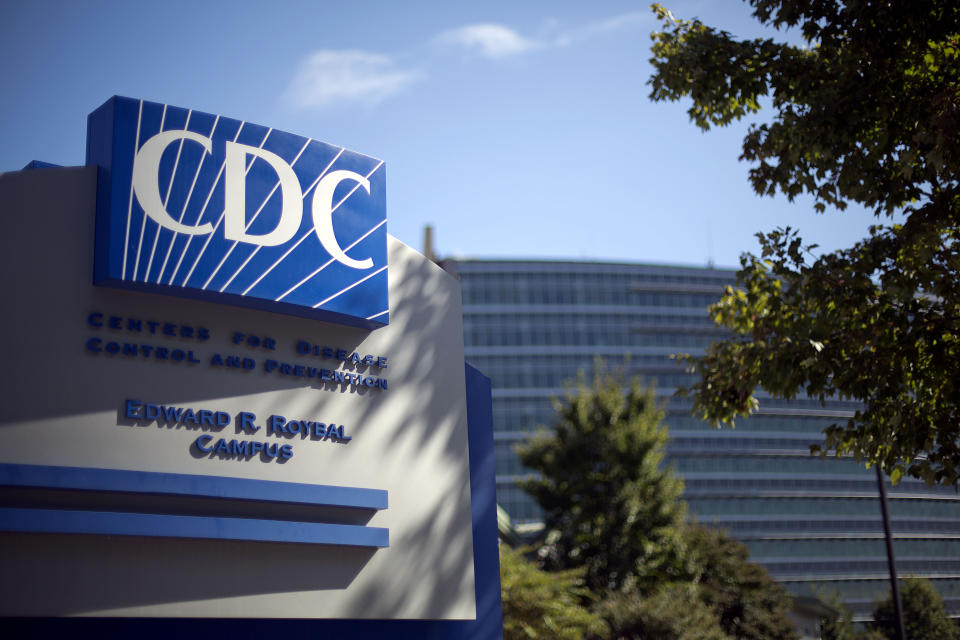How faxes and email are slowing the U.S. COVID-19 response
You’d hardly know the U.S. invented the internet by the way its public health agencies are collecting vital pandemic data.
While health-care industry record-keeping is now mostly electronic, cash-strapped state and local health departments still rely heavily on faxes, email and spreadsheets to gather infectious disease data and share it with federal authorities. The data dysfunction hamstrings the nation’s coronavirus response, including in tracing people potentially exposed to the virus.
In April, the Trump administration set up a parallel reporting system run by the Silicon Valley data-wrangling firm Palantir. Duplicating many data requests, it placed new burdens on front-line workers at hospitals, labs and clinics already reporting case and testing data to public health agencies. There’s little evidence the Palantir system has measurably improved federal or state response to COVID-19.
Emails exchanged between Nevada officials and the Centers for Disease Control and Prevention in March and early April, obtained by The Associated Press in a public records request, lay bare disease-reporting bottlenecks. It sometimes takes multiple days to track down patients' addresses and phone numbers. Data vital to case investigations such as patient travel and medical histories is missing.
None of this is news to the CDC or other health experts.
“We are woefully behind,” the CDC’s No. 2 official, Anne Schuchat, wrote in a September report on public health data technology, likening the state of U.S. public health technology to “puttering along the data superhighway in our Model T Ford.”
Most hospitals and other health care providers have long since ditched paper files for electronic health records that are easily shared within the industry.
But data collection for infectious-disease reports is another story, particularly compared to countries like Germany and Britain, which are populating online dashboards rich in current COVID-19 data and analysis. In Germany, a map populated with public data gathered by an emergency-care doctors’ association even shows hospital bed availability. Many U.S. states — New York and Colorado stand out — also have dashboards that help guide policy.
In the U.S., many hospitals and doctors often fail to report detailed clinical data on coronavirus cases, largely because it would have to be manually extracted from electronic records, then sent by fax or email, said Johns Hopkins epidemiologist Jennifer Nuzzo. It's not unusual for public health workers to have to track patients down on social media, or use the phone book, said Rachelle Boulton, a Utah health department.
Deficiencies in CDC collection have been especially glaring.
In 75% of COVID-19 cases compiled in April, data on the race and ethnicity of victims was missing. A report on children affected by the virus only had symptom data for 9% of laboratory-confirmed cases for which age was known. A study on virus-stricken U.S. health care workers could not tally the number affected because the applicable boxes were only checked on 16% of received case forms. In another study, the CDC only had data on preexisting conditions — risk factors such as diabetes, heart and respiratory disease — for 6% of reported cases.
Missing from daily indicators that CDC makes public is data such as nationwide hospitalizations over the previous 24 hours and numbers of tests ordered and completed — information vital to guiding the federal response, said Dr. Ashish Jha, director of the Harvard Global Health Institute. “The CDC during this entire pandemic has been two steps behind the disease,” he said.
Instead of accelerating existing efforts to modernize U.S. disease reporting, the White House asked Palantir, whose founder Peter Thiel is a major backer of President Donald Trump, to hastily build out a data collection platform called HHS Protect. It has not gone well.
On March 29, Vice President Mike Pence, who chairs the White House pandemic task force, sent a letter asking 4,700 hospitals to collect daily numbers on virus test results, patient loads and hospital bed and intensive care-unit capacity. That information, the letter said, should be compiled into spreadsheets and emailed to the Federal Emergency Management Agency, which would feed it into the $25 million Palantir system.
Stressed hospitals already reporting to state and local health departments protested. Producing additional cumbersome reporting "is just not sustainable,” said Janet Hamilton, executive director of the Council of State and Territorial Epidemiologists.
HHS Protect now comprises more than 200 datasets, including reporting from nearly three-quarters of the roughly 8,000 U.S. hospitals, according to Katie McKeogh, an HHS press officer. But it's not clear how accurate or helpful HHS Protect has been. Asked for examples of its usefulness, McKeogh mentioned only one: task force coordinator Dr. Deborah Birx receives a nightly report that provides “a common (nationwide) operating picture of cases at a county level.”
Farzad Mostashari, who a decade ago oversaw the federal effort to modernize paper-based medical records, said fixing existing public-health data reporting makes more sense than creating parallel systems.
“We have a lot of the pieces in place,” Mostashari said. A public-private partnership called digitalbridge.us is central to that effort. Since automated case reporting was expanded in late January more than 252,000 COVID reports have been generated, said CDC spokesman Benjamin N. Haynes.




